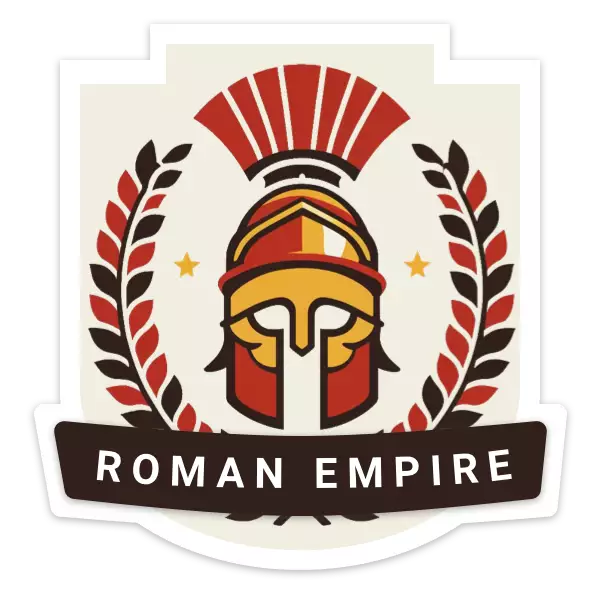The Roman Empire

Roman Empire
27 BC to AD 476
The Roman Empire was one of the largest and most powerful civilizations in history, lasting from 27 BC to AD 476 in the West and until AD 1453 in the East. It began when Augustus became the first emperor, transforming Rome from a republic into an empire. The Romans are known for their impressive achievements in engineering, law, and government. They built extensive roads, aqueducts, and monumental structures like the Colosseum. The empire spanned three continents, including Europe, Asia, and Africa, and influenced many aspects of Western culture and society that continue to this day..
Sticker Collection

Alcántara Bridge
Spain
Built in AD 104 to honor Roman Emperor Trajan.
Photo by Abel Domi

Alyscamps
France
An ancient Roman cemetery established in the 4th century AD.
Photo by Shadowgate

Amphitheatre of El Jem
Tunisia
A 35,000 spectator amphitheater built in AD 238 by Emperor Gordian.
Photo by Carole Raddato

Amphitheatre of Tarraco
Spain
A 15,000 person entertainment venue built in the 2nd century.
Photo by Carole Raddato

Ancient Theatre of Fourvière
France
This well preserved Roman theatre was built during the reign of Emperor Augustus.
Photo by Andrew Smith

Appian Way
Italy
Known as the "Queen of Roads", this ancient road was built in 312 BC to move military supplies.
Photo by Paul Stephenson

Aqueduct of Segovia
Spain
This well preserved Roman aqueduct dates back to the 1st century AD.
Photo by Eric Titcombe

Arbeia Roman Fort
United Kingdom
A Roman fort protecting Rome's northern border.
Photo by Carole Raddato

Arena of Nîmes
France
A well-preserved Roman amphitheater dating back to AD 70.
Photo by Todd

Arles Amphitheatre
France
This large Roman amphitheatre from 90 AD is still in use today.
Photo by Elliott Brown

Circ Romà
Spain
A 325-meter track built for racing chariots.
Photo by Carole Raddato

Colosseum
Italy
Explore the ancient amphitheater where gladiator battles entertained crowds of up to 80,000 people.

Crawfield's Roman Wall
United Kingdom
Constructed in AD 122, This 73 mile wall protect the Roman empire in England from attacks.
Photo by Mike Bishop

Ercolano
Italy
Discover the well-preserved ruins of this ancient Roman town destroyed when Mount Vesuvius erupted.

Forum of Nerva
Italy
An imperial forum completed under Emperor Nerva around AD 97.
Photo by Adam Lusch

Forum of Trajan
Italy
A grand Roman imperial forum built by Emperor Trajan.
Photo by Michael Gaylard

Hadrian's Arch
Greece
A grand gateway between the old city of Athens and the new.
Photo by psyberartist

Maison Carrée
France
Built around 16 BC, the temple is one of the best-preserved Roman buildings in the world.
Photo by Brandan Norman

Pantheon
Italy
This well preserved temple from ancient Rome was built to "honor all Gods".
Photo by Tim McCune

Pompeii
Italy
Buried under ash when Mount Vesuvius erupted, the city wasn't discovered again until 1748.
Photo by Gary Todd

Pont du Gard
France
View the well preserved ancient Roman aqueduct that transported water 50 km to the colony of Nemausus.
Photo by Water Alternatives Photos

Pula Arena
Croatia
Completed in AD 68, the arena held up to 23,000 spectators.
Photo by César González Palomo

Roman Forum
Italy
An open-air location where important political, religious, and other social events took place in ancient Rome.

Roman Theatre of Mérida
Spain
Built between 16 and 15 BC by order of the Roman consul Marcus Vipsanius Agrippa.
Photo by Kent Wang

Temple of Diana
Spain
Made of granite, the temple was built in a classic Roman style.
Photo by Kent Wang

Trajan's Market
Italy
An early shopping mall built over 1900 years ago.
Photo by Paul VanDerWerf

Verona Arena
Italy
Made of pink and white limestone, the arena was built during the reign of Emperor Augustus.
Photo by Dimitris Kamaras

Villa Adriana
Italy
An impressive ancient Roman villa built by Emperor Hadrian in the 2nd century AD.
Photo by Alexander Mooi

Vindolanda
United Kingdom
A Roman fort where ancient wooden tablets detailing the everyday lives of its people were discovered.
Photo by Robert Drummond
